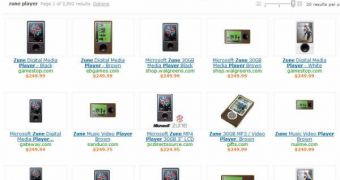At the end of the past week, Microsoft shipped another overhauled piece of the new Live Search roll-out. In this manner, the Live Search Products service not only fits into the latest wave of Live Search releases, but also delivers the first signs of life of Live Search's e-commerce oriented component after a prologued period of complete silence, spanning throughout almost the entire past year. At the beginning of 2007, Google rebranded Froogle as Google Product Search and, in this context, Live Search Products, because of both the label and the area of focus, is yet another front where Microsoft goes against the Mountain View search giant.
"The team just released changes to the live site that boost customer-perceived relevance by increasing the number of query results with images," explained Imran Aziz and Ling Bao from the Live Search Products team. "[...] Why aren't there 100% images in the top results? The reason is largely because many sites, including very reputable merchants like Amazon.com, BestBuy.com, and AceHardwareSuperStore.com, block image crawling bots or seriously throttle them. We will have to work with these sites to address these issues, but the latest improvements in the number of Product Search top results with images are already quite significant."
According to Microsoft, the new version of Live Search Products delivers an improvement in the quantity of images of no less than 9.4%. This means that while the old variant of top results offered 79.2% images, the new iteration goes up all the way to 88.6% top results complete with images.
"This update, in addition to continued improvements in our selection from both crawl and the Product Upload Beta, is one example of how we are improving Product Search relevance. This begs the question: how do you measure relevance?" Aziz and Bao asked.
Microsoft revealed that a number of factors are taken into consideration when it comes down to judging the relevance of the results returned to a product search. First off there has to be an inherent connection between the query and the product displayed, one that is immediately visible to the end users, but less obvious to the search engine due to the keywords associated with certain images. The Redmond company added that it is also looking to check whether the results contain images, as these items are preferred by end users, and if the products point to a reputable seller, rather than obscure and untrustworthy e-commerce websites.

 14 DAY TRIAL //
14 DAY TRIAL //